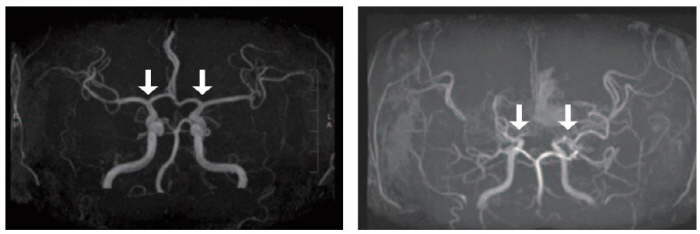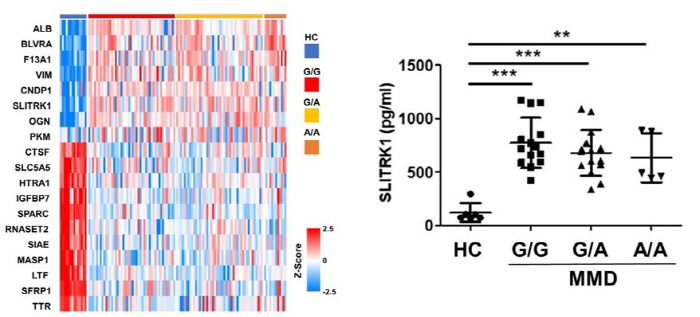Discovery of Prediction Indicators for Diagnosing and Prediction of Childhood Moyamoya Disease...Expectations to present new treatments
Nov 06, 2025
|
Childhood moyamoya disease is a chronic progressive cerebrovascular disease in which the blood vessels that supply blood to the brain gradually narrow without any specific cause. The condition creates abnormal microvessels to make up for insufficient blood flow, which are difficult to supply enough blood flow and are prone to rupture, which can cause childhood strokes such as cerebral infarction and cerebral hemorrhage.
The confirmation of Moyamoya disease is made through cerebrovascular angiography. However, as sedation or anesthesia were often required before testing, a new diagnostic method was needed due to the high burden on pediatric patients. Recently, cerebrospinal fluid has attracted attention as a useful resource for discovering biomarkers for central nervous system diseases, but large-scale research on moyamoya disease using it was insufficient.
|
The research team comprehensively analyzed the proteins in the cerebrospinal fluid of the Moyamoya disease patient group (104) and the control group (14). As a result, a total of 2,400 proteins were identified, and eight of them had relatively high expression intensity in the patient group. Enzyme immunoassays of these proteins showed high concentrations of 'SLITRK1', particularly associated with neuronal growth. This suggests that neurons may influence the mechanism of moyamoya disease progression.
As a result of diagnostic performance verification, SLITRK1 showed excellent performance with AUROC 0.926. The research team emphasized that this protein could be a diagnostic biomarker for moyamoya disease.
Additionally, the research team grouped proteins with similar change patterns through weighted gene co-expression network analysis and identified their association with Moyamoya disease clinical characteristics. As a result, patients with preoperative cerebral infarction had high BASP1 and LDH expression, and patients with good surgical prognosis had high CD9 and EMILIN1 expression. In particular, the higher the CD9 expression that promotes neovascularization, the lower the mRS score (the degree of postoperative dysfunction), confirming the association between this protein and the prognosis of Moyamoya disease surgery.
Professor Kim Seung-ki of Seoul National University Hospital (Pediatric Neurosurgery) "Through this study, we have discovered a biomarker for early diagnosis and treatment of pediatric moyamoya disease in cerebrospinal fluid, and we are one step closer to developing an efficient liquid biopsy-based diagnostic method."In particular, the newly identified Moyamoya name prognostic indicators could serve as the basis for establishing customized treatment strategies."
Meanwhile, this study was carried out with the support of the Korea Research Foundation, the Seoul National University Hospital Research Fund, and Lee Kun-hee's project to overcome childhood cancer and rare diseases, and was published in the latest issue of the prestigious journal Translational Stroke Research.
|
This article was translated by Naver AI translator.
















